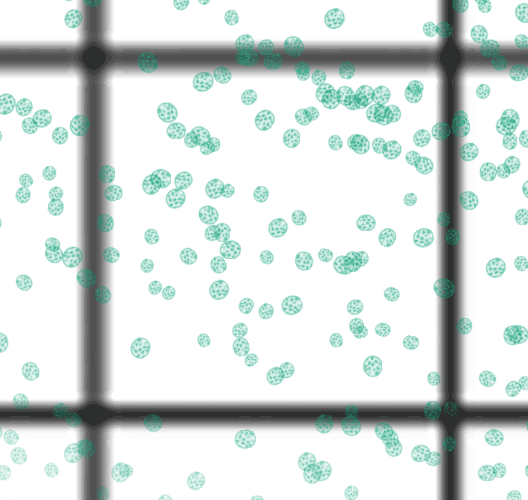 Many, many M. aeruginosa
Many, many M. aeruginosa
Remember that, in addition to diatoms, Nemo wanted to count a much smaller cyanobacteria called Microcystis aeruginosa. That's the one that has explosive population growth, uses up dissolved oxygen, and produces toxins. In other words, it's the true villain of our story.
This bacteria is tiny, so we're going to use the smallest gridsquares in the very center of the hemocytometer.
In addition, M. aeruginosa tends to reproduce in clumps, so you need good lab technique to separate the cells. If not, you end up with something that looks like this:


But even with good technique, you can run into another problem. Take a look at the right...
This is an awful lot of bacteria to count, even though we used the smallest possible gridsquare. What can be done...?
| give up | count them all anyway | count only the upper 1/4 of the gridsquare | dilute the culture |
Assuming we do a 10:1 dilution, we'll only have to count 1/10th of the bacteria. After we finish counting, in order to find the real density, we'll need to by
Copyright University of Maryland, 2013
You may link to this site for educational purposes.
Please do not copy without permission
requests/questions/feedback email: mathbench@umd.edu